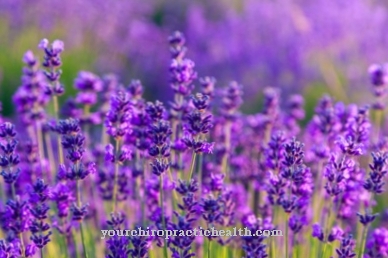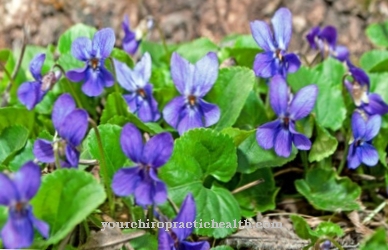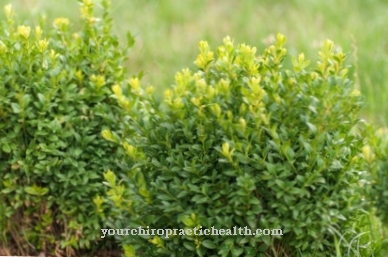Occurrence and cultivation of borage

Of the Borage is an annual plant. The dark, hairy leaves and the initially pink, later blue flowers are striking. These are often used in the kitchen: the leaves as a seasoning, for example for cucumber salad or herb spreads, the edible flowers as a decoration. According to the Federal Institute for Risk Assessment, the leaves contain substances that are harmful to the liver and should therefore not be consumed regularly or in large quantities.
However, there is nothing to prevent occasional use as a seasoning herb. The leaves should always be used fresh and raw as they lose a lot of their aroma during drying or cooking. They can be preserved by soaking them in vinegar or oil.
The borage reaches a height of up to 70 centimeters under favorable conditions. The plant originally comes from the Mediterranean region and spread throughout Europe through cultivation in the medieval monastery gardens. As a rule it is grown in gardens, but occasionally occurs in a wild form.
Effect & application
Medicinal use of the leaves is not recommended due to the health risks. However, this does not apply to the seeds and the oil obtained from them. These are safe and available in a variety of preparation forms. In addition to the possible damage to the liver, the risks also include the effect on blood clotting.
This is reinforced by the ingredients of the borage. This side effect should be especially watched for by people who take medicines to reduce blood clotting. If in doubt, a doctor should be consulted before prolonged use.
Borage leaves are still used today as an expectorant cough tea. Due to the described side effects, however, this should not be taken over a long period of time. Herbal medicine describes a sweat-inducing and detoxifying effect for borage. It was therefore used as an antipyretic and for detoxification. An anti-inflammatory effect has also been described for borage, which is why it was also used to treat wounds or rashes.
Occasionally there is evidence of a positive effect on the complexion of atopic dermatitis. For this purpose, the oil pressed from the seeds of the plant is used internally or externally. There are various dosage forms available for internal use. Borage seed oil is available as capsules or tablets. But it can also simply be included in the daily diet and used, for example, as a salad oil.
When using tablets or capsules, the manufacturer's dosage information should be observed; when using the oil in the kitchen, a dosage of 0.5-3 grams is considered effective. However, the effect only becomes apparent after 4 to 12 weeks. A similar positive effect has also been described for psoriasis. The use of borage oil can also bring relief from these skin diseases externally. For this purpose, the doctor usually prescribes an ointment that is individually mixed in the pharmacy for the patient and his skin needs.
Herbal medicine also describes a calming effect of borage. It was therefore often used as a mild sleep aid. It was also often used against melancholy in the past. In addition, the herb is said to have a strengthening and antihypertensive effect. It also has a positive effect on the metabolism and digestive organs.
Borage is used externally as a tea, tincture or ointment, for example for inflammatory skin diseases or poorly healing wounds. A tea is often recommended for medicinal use in herbal medicine. This is prepared from one or two teaspoons of the dried herb, which is poured with boiling water.
After brewing for 10 minutes, it is drunk hot in small sips. Three cups of this tea are drunk daily, but not longer than six weeks at a time. This on the one hand reduces the side effects of borage, on the other hand it prevents the body from getting used to the product.
Importance for health, treatment & prevention
Because of the health risks described, borage is rarely used in medicine today. When used in the kitchen, positive health aspects of the plant can also occur on the side.
Due to the increase in alternative forms of treatment, especially for skin diseases, an increase in importance is to be expected. Because it can be used internally as well as externally, the product can be used to cater to various wishes and needs of patients. For short-term applications, herbs that you have collected yourself can be used. Ready-made preparations should be used for a longer treatment.
On the one hand, the active ingredient content is always relatively the same due to quality controls. On the other hand, as already described, these are made from the oil of the seeds and therefore do not contain any harmful substances. In any case, a doctor should be consulted in advance in the event of existing health problems that could prevent treatment with the agent.





.jpg)


















.jpg)



